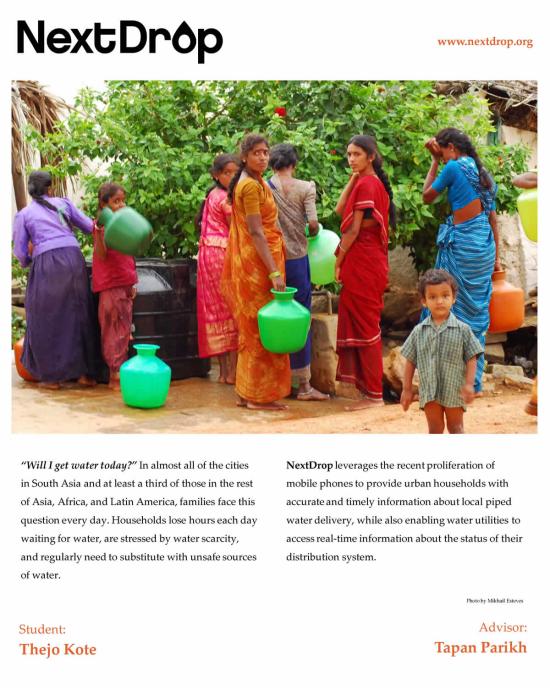NextDrop
"Will I get water today?" In almost all of the cities in South Asia and at least a third of those in the rest of Asia, Africa, and Latin America, families face this question every day. These millions of households have a piped water supply; however, water is only available through these pipes for a few hours at a time. In Hubli-Dharwad, a city of 1.1 million people in the state of Karnataka, India, where we are conducting a pilot, the utility pipes in water on a four day rotation. Depending on the season and the neighborhood, water can take up to eight days to arrive. Households lose hours each day waiting for water, are stressed by water scarcity, and regularly need to substitute with unsafe sources of water. Households lose an estimated 7 days each year waiting for the water, which equates to a city-wide loss of over 1.2 million days per year. Hubli-Dharwad is only one of over 400 cities in India, each with populations over 100,000, which face similar unreliable piped water supply.
NextDrop leverages the recent proliferation of mobile phones in India to provide households with accurate and timely information about local piped water delivery, while also enabling water utilities to access real-time information about the status of their distribution system. In Phase 1 of our pilot project, NextDrop sourced this information from water consumers: by providing micro-payment incentives, consumers notified our automated interactive voice response (IVR) system when the water began flowing, and NextDrop in turn notified residents in the same locality of the current delivery of water. In Phase 2, we have partnered with the public water utility - the Hubli-Dharwad Water Board - and are now receiving updates directly from utility employees who physically open the valves in order to provide advance notice of water delivery. The plan for the immediate future is to study the viability of providing reliable information about water availability with the participation of the water utility.










